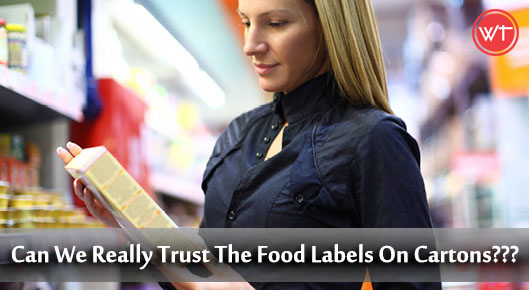Food Labels can be misleading, especially when the terminology mentioned there is all jargon for you. What if you are bestowed with a full fledged guide that leads you to understand the food labels? Well I think nothing beats that.
Grab a packet of lays or a food carton claiming the item to be sugar free, while you scan an eye on every character of this article. Compare and learn and understand those labels on your favorite edibles.
Contents
MODIFIED STARCH
The term “modified starch” describes starch that has been physically or chemically treated for food product preparation, often for use as a thickener. It does not mean it has been genetically modified. Check with the supplier to be sure.
“USE BY” and “BEST BEFORE” DATES
You will see “use by” dates On food items that perish comparatively faster. Smoked fish Or ready prepared salads for example. It is anytime suggested not to consume them after this date. “Best before” dates explain more about quality. When this date expires, the food might just begin to lose its taste, texture and look.
SELL-BY DATES
Sell-by dates should not be a botheration to the consumers. It is just another hype created. Sell-by date guides the retailers that for how long the food item must be displayed on the shelves. It does not give the optimum date for its consumption. So do not trash the food items considering the sell-by date.
INTERNATIONAL DATES
When you’re looking at use by and best before dates, be aware that different countries use different date formats. For instance. in the USA 07/03/07 means July 3, 2007 where as the same date in the EU/UK it refers to 7th March, 2007.
VEGETARIAN
Foods Labelled “vegetarian” does not include anything derived from animal source. These food products are purely vegetarian.
CHOLESTEROL OR LOW CHOLESTEROL
“Cholesterol Free” or “LOW Cholesterol” means that the product does not contain any or only small amounts of animal fat or saturated fat. But it does not necessarily mean the product is low fat. Vegetable oils are cholesterol -free but made entirely of fat.
NAME OF THE FRUITS
Foods labelled by the “name of the fruit” are the one’s containing ingredients from the actual fruit. If you come across labels like “fruit flavored“, it usually refers to the flavor of the fruit that has been used to give flavor to the product. Also if you encounter the picture of a fruit on the carton, the edible’s flavor must by law, come wholly or mainly from the fruit itself.
BARN EGGS
The eggs labelled as “Barn Eggs” are the one’s that come from birds that live in a shed but have an access to perches , nest boxes and litter. They can move around and therefore can forage and roost. They are also termed as Free range eggs.
FREEDOM FOODS
If you see foods labelled as “Freedom Foods”, it implies that the product has been made by monitored farms. Specifically poultry, dairy, eggs and meat products.
ORGANIC MYSTERY
For the purpose of promoting the consumption of organic foods (which are assured to be free of any nasties, whatsoever), different countries have set their respective labels to identify organic foods. In the U.K The Soil Association is labelled on the foods. In Australia, the equivalent is Organic Federation of Australia. And, In the U.S chose foods labelled USDA (United States Department of Agriculture) for buying organic foods. So if you find the italicized labels on foods, it means the product is organic in nature.
PRODUCE OF COUNTRY
If the foods are labelled as for example “produce of the EU or South America” or “produce of Eu, Brazil or Thailand, this means the product is made from the resources of the country mentioned. However this may be misleading. A french lamb imported to brazil, slaughtered to Brazil and sold there, would be labelled, “produce of Brazil”. Therefore, customers owing to their rights, can ask the supermarket or butcher for details.
MAGNITUDE FAT FREE
something labelled 90% fat Free could contain 10% fat, which is a lot higher than 3% it needs to be to be labelled “Low fat”.
MORE FIBER OR ADDED FIBER
Foods that are labelled “more fibre” or “added fibre” means that the product must contain at the least 5 grams of fiber in one serving of the food. This is however a classification given by the USA. Different countries have different measurements of fiber count per serving.
SUGAR HIGHS
Foods labelled with sugar contents at the very top of the ingredients’ list, means that it is high in sugar content, and cause blood sugar peaks. Sugar contents mentioned at the second place means the sugar content is lesser compared to the products with sugar content printed at the top. And so on.
NO PRESERVATIVES AND NO PRESERVATIVES ADDED
Food which is labelled “no preservatives” means exactly what it says. but do not confuse it with the label “no preservatives added” – this is used to label food that could contain natural preservatives such as salt and essential oils.
A LIGHT QUANTITY
Although Smile light products have certain guidelines to which they must adhere. sometimes the word refers to the taste or colour. For instance, light olive oil has no fewer calories or less fat than regular olive oil – it simply tastes more delicate.
LEAN
Food that is labelled “lean”, means that per serving it contains 10 g or less of fat, of which 4.5 g or less are saturated, and less than 95 mg cholesterol. Remember that this is for an 85 g (3 oz) portion, though. Larger portions will contain more fat.
REDUCED
Reduced” on a food label actually means that the product contains 25% less of the specified ingredient (for instance, reduced fat or reduced sugar) than the usual product. Check the label to see exactly what quantity is it, per serving.
LOW SODIUM OR LOW SALT
Foods that are labelled as “low sodium” or “low salt” means that the item contains 140 mg of salt per serving.
NO ADDED SUGAR
The label “No added sugar” means the food item contains 2 g per 100 g of product. It does not mean the product is necessarily low in sugar. Many foods (such as fruit) contain natural sugars, so ‘no added sugar’ really means that no extra refined sugar has been added.
FAT FREE OR SUGAR FREE
Products labelled as “fat free” or “sugar free” are guaranteed to contain less than half a gram of fat or sugar per selling.
CHECK LIST
If you’re looking at ingredients’ lists, remember they are given in descending order. So the ingredient which is maximum in quantity, will be listed first and the one which is least, will be mentioned last in the list of ingredients.
SALT OR SODIUM
If the sodium content of the food item is given instead of the amount of salt in the product, then multiply the given sodium content with 2.5 to get the salt content of the food item.
TRADITIONAL OR FARMHOUSE OR WHOLESOME OR ORIGINAL
Items labelled as “traditional” often contain a number of non-traditional ingredients, including E-numbers, and there’s no law against using this word on foods. The other words that fall into this category are “farmhouse” wholesome” and “original”.
HIGH IN ……
If a food is labelled “High in…“, it will contain at least 20% of the recommended daily amount of that particular nutrient.
A GOOD SOURCE OF …….
Foods that are labelled “a good source of…” means that it provides at least 10% of the recommended value of a nutrient.
CALORIE FREE
Foods that are labelled “calorie free“, means that the food contains fewer than five calories per serving.
LOW CALORIE
Foods labelled “low calorie” means there are less than 40 calories per serving.
Now that you’re acknowledged, you’d be wanting to thank us 😀
Why don’t you tweet and comment to reflect the gesture 😀
Stay Healthy!! Stay Fit!! Stay Aware!!







Comments are off this post!